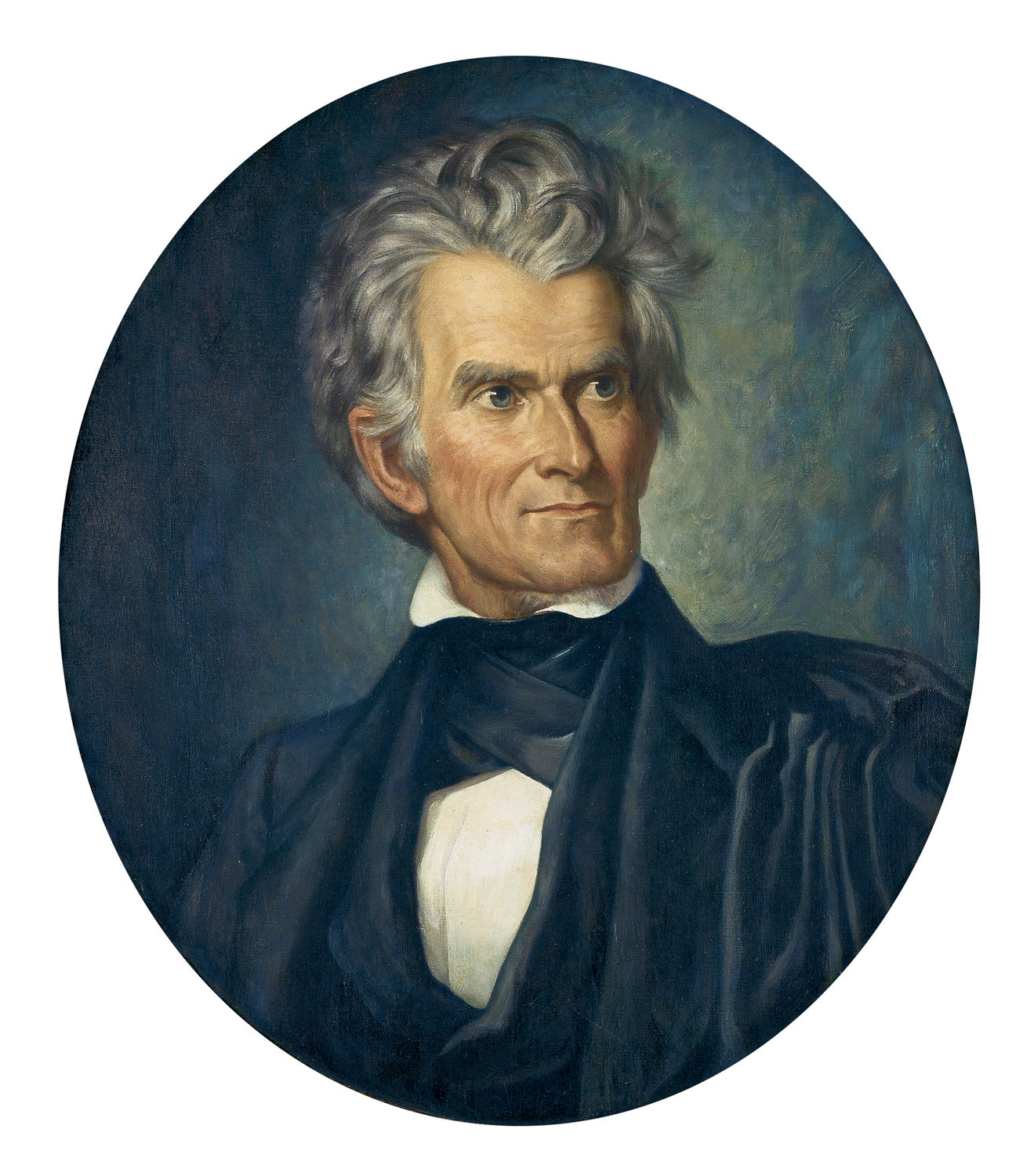
| Title | John C. Calhoun |
| Artist/Maker | Arthur E. Schmalz Conrad |
| Date | 1958 |
| Medium | Oil on canvas |
| Dimensions | h. 22.625 x w. 19.5 in. (h. 57.4675 x w. 49.53 cm) |
| Credit Line | U.S. Senate Collection |
| Accession Number | 32.00009.000 |
When artist Constantino Brumidi designed the walls of the Senate Reception Room in the mid-19th century, he planned five decorative plaster panels, each to contain portraits of “illustrious men.” Brumidi never completed the mural decorations for the room, and the ovals remained blank. In 1955, by resolution of the U.S. Senate, a committee was created to choose five outstanding former senators whose likenesses would fill the ovals. Senator John F. Kennedy of Massachusetts chaired the committee as it sought counsel from historians, political scientists, and senators. From more than 60 nominees, the committee unanimously selected three 19th-century senators: Henry Clay of Kentucky, Daniel Webster of Massachusetts, and John C. Calhoun of South Carolina. It also chose two 20th-century senators, Robert M. La Follette, Sr., of Wisconsin and Robert A. Taft, Sr., of Ohio. The committee reported its recommendations to the full Senate in May 1957, and later that year a commission was established to oversee the creation of the portraits. A formal unveiling of the completed works was held on March 12, 1959.
Maryland artist Arthur Conrad, a graduate of the Yale School of Fine Arts, based his painting of John C. Calhoun on a life portrait by George P.A. Healy in the collection of the Virginia Museum of Fine Arts in Richmond. Healy created the portrait as a preparatory study for a larger and later painting, Webster’s Reply to Hayne. In both of Healy’s works, Calhoun is shown seated in the vice president’s chair in the Senate Chamber. It was from this seat that Calhoun presided in 1830 during the famous Webster-Hayne debate over the nullification doctrine.
Conrad began his portrait of Calhoun in his studio and completed the work after it was installed in the Senate Reception Room. He later executed a replica of the Senate’s portrait for the county courthouse in Abbeville, South Carolina.
John Caldwell Calhoun served as both a U.S. representative and senator from South Carolina, and as the seventh vice president of the United States. Calhoun was born near Calhoun Mills, Abbeville District (now Mount Carmel, McCormick County), South Carolina. After practicing law, and serving in the state house of representatives from 1808 to 1809, Calhoun was elected to the U.S. House of Representatives in 1810. There he became one of Speaker Henry Clay's principal lieutenants and a leader of the warhawks, a group of young congressmen who advocated war with Great Britain. As chairman of the House Foreign Affairs Committee, Calhoun introduced the declaration of war against Britain in June 1812. He served as secretary of war under President James Monroe from 1817 to 1825, was elected vice president with John Quincy Adams in 1824, and was reelected vice president on a ticket with Andrew Jackson in 1828.
To further his opposition to high protective tariffs, Calhoun devised a doctrine of nullification whereby states could declare federal laws null and void within their borders. When President Jackson threatened to use military power to enforce a federal law nullified by South Carolina, Calhoun broke with Jackson. Calhoun resigned the vice presidency in December 1832 in order to fill a vacancy in the U.S. Senate. A powerful advocate for the Southern position, Calhoun supported the institution of slavery and the right of slaveholders to extend the practice into the western territories.
Calhoun resigned from the Senate in 1843 planning to run for president, but instead he served briefly as secretary of state in the cabinet of President John Tyler. He was reelected to the Senate in 1845 and remained there until his death in 1850. Calhoun—along with Daniel Webster and Henry Clay—was part of the "Great Triumvirate" of the Senate's Golden Age.